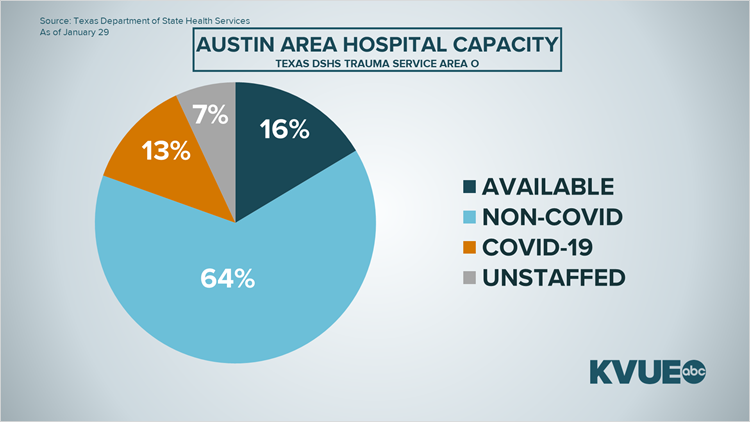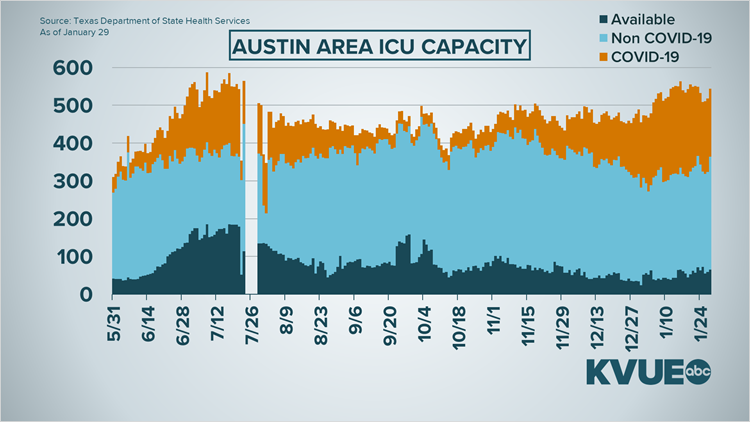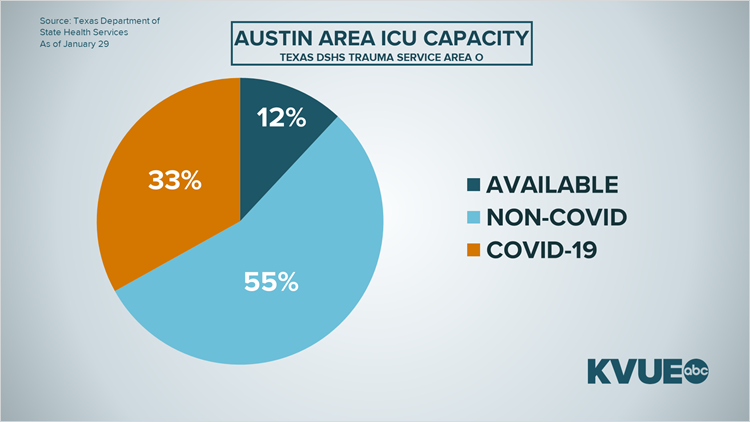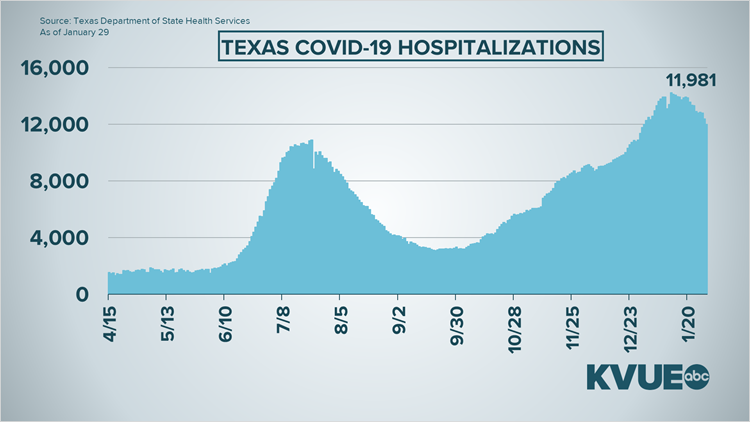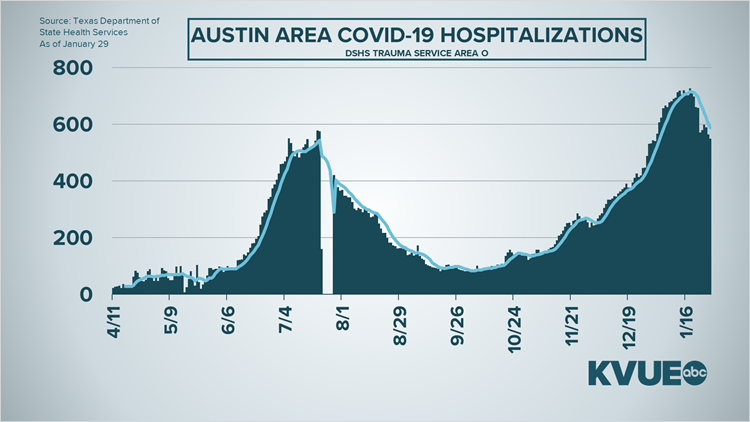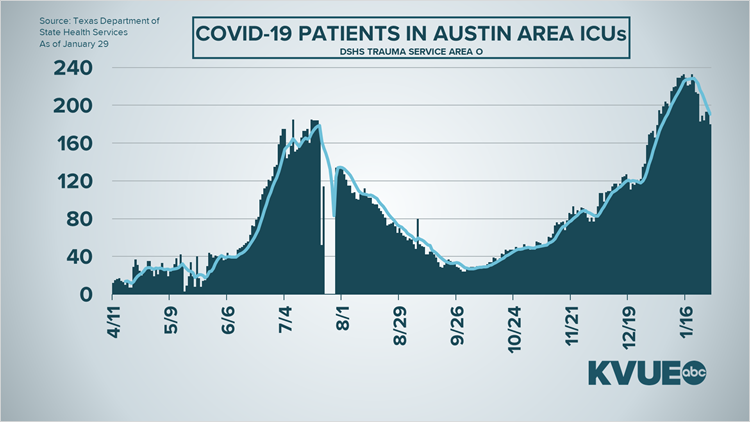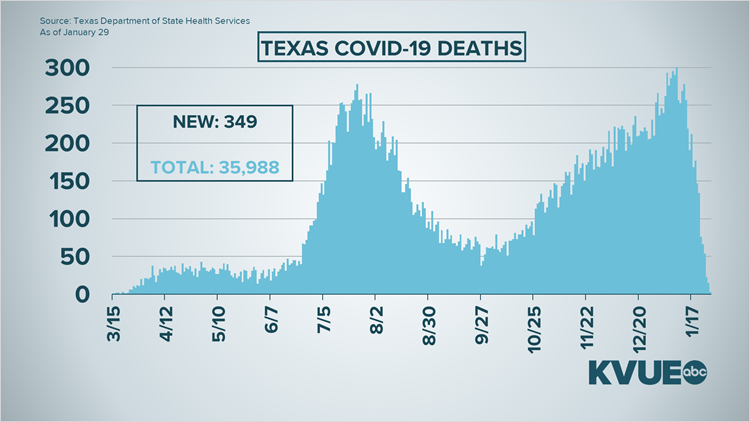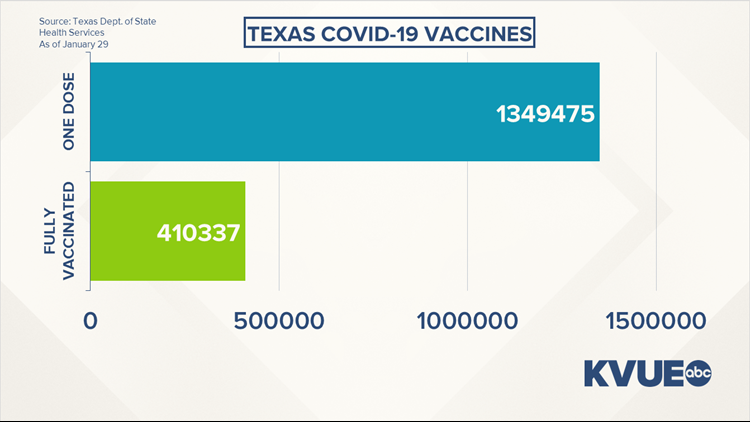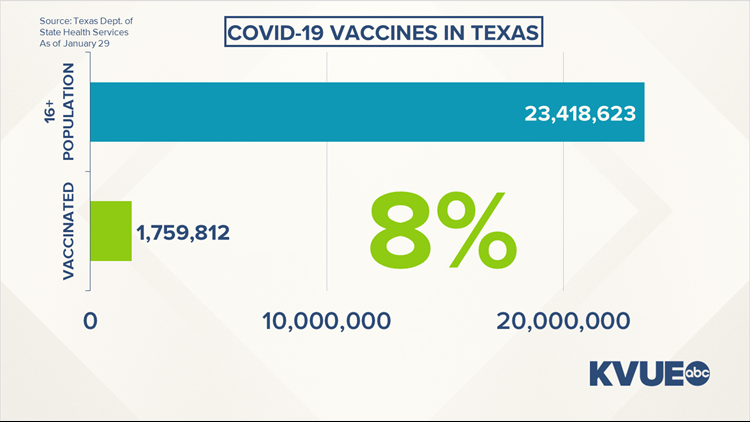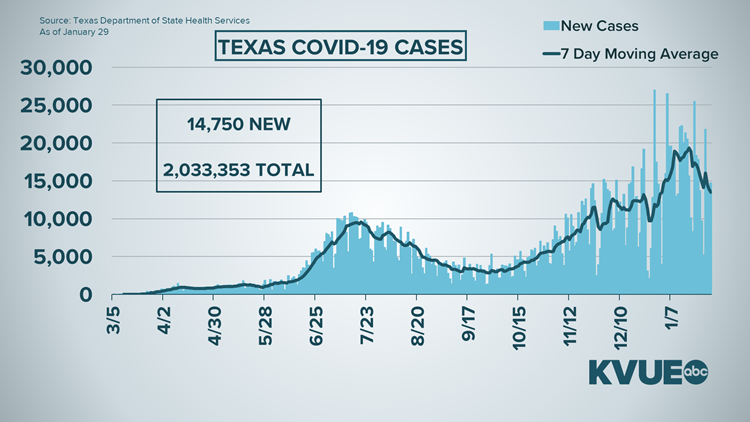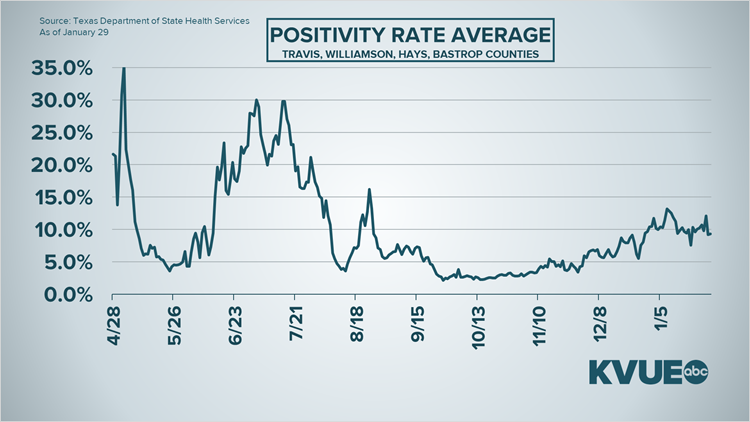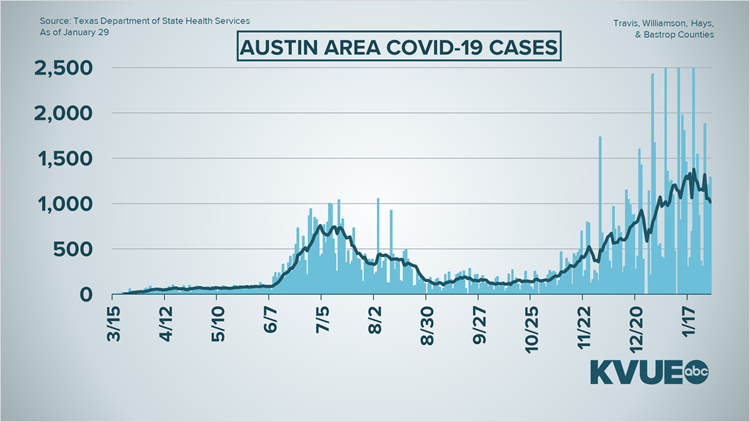AUSTIN, Texas — KVUE is keeping you updated with the latest coronavirus and COVID-19 news in the Austin area.
Scroll down for the top headlines and latest updates in KVUE's Jan. 31 live blog.
COVID-19 numbers:
- Texas: More than 2 million cases have been reported in the state, and more than 36,300 people in Texas have died, according to the Texas Department of State Health Services.
- Central Texas counties:
- Travis County: At least 68,731 cases have been reported and at least 655 people have died. At least 62,982 people have recovered from the virus.
- Hays County: At least 14,692 confirmed cases have been reported and at least 186 people have died. At least 12,218 people have recovered from the virus.
- Williamson County: At least 31,271 cases have been reported in the county and at least 314 people have died. At least 29,163 people have recovered from the virus.
For a look at COVID-19 data across all of the state's counties, click here.
GRAPHS: Coronavirus data Jan. 29
Updates:
5:56 p.m. – Travis County reports 441 new cases of COVID-19 and zero new deaths. In Travis County, at least 68,731 cases have been reported and at least 655 people have died. At least 62,982 people have recovered from the virus.
5:35 p.m. – The Texas Alcoholic Beverage Commission (TABC) has approved County Judge Bill Gravell’s request to allow bars to reopen in Williamson County, as Trauma Service Area (TSA) Region O no longer meets the definition of an “area with high hospitalizations” per Gov. Greg Abbott’s Executive Order GA-32. Williamson County received notification on Jan. 30 from the Texas Department of State Health Services (DSHS) that TSA O was no longer an “area with high hospitalizations” as the COVID- 19 hospitalized patients as a percentage of total hospital capacity had not exceeded 15% for the past seven consecutive days.
Under GA-32, bars or similar establishments that hold a permit from the TABC, and are not restaurants according to the order, may offer on-premises services up to 50% of the total listed occupancy of the establishment if the bar or similar establishment is not in an area with high hospitalizations, and the county judge of the county in which it is located files the requisite form with TABC.
3:20 p.m. – The State of Texas will receive 520,425 first doses of COVID-19 vaccine from the federal government for the week of Feb. 1. The Texas Department of State Health Services (DSHS) has instructed the Centers for Disease Control and Prevention (CDC) to ship those doses to 344 providers in 166 counties across Texas. That includes 82 hub providers that will focus on broader community vaccination efforts including the hardest hit populations and areas in exchange for a steady supply of vaccine from week to week. 262 other providers will receive doses next week, including more than 100 federally qualified health centers, community health centers, and rural health clinics that typically provide primary care for underserved populations.
3:05 p.m. – Hays County businesses can return to operating at 75% capacity and elective surgeries may resume, according to Gov. Greg Abbott's executive order which dictates capacity limits based on area hospitalization rates.
Should Hays County COVID-19 hospitalizations again rise above 15% of capacity for seven consecutive days, businesses will have to operate at 50% capacity, while elective surgeries would be put on hold.
8 a.m. – Austin businesses can return to operating at 75% capacity and elective surgeries may resume, according to Gov. Greg Abbott's executive order which dictates capacity limits based on area hospitalization rates.
Should Austin-area COVID-19 hospitalizations again rise above 15% of capacity for seven consecutive days, businesses will have to operate at 50% capacity, while elective surgeries would be put on hold.
RELATED: Austin-area businesses can return to 75% capacity as COVID-19 hospitalization rate improves
Austin, however, remains under Stage 5 of the City's risk-based guidelines, meaning it is recommended all residents avoid gatherings with anyone outside their own households, avoid non-essential travel and only use contactless options for businesses.
PEOPLE ARE ALSO READING:



